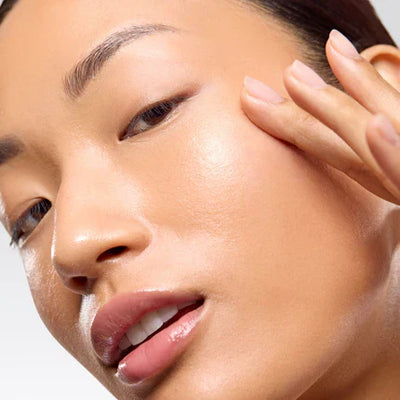Often starting with a few extra strands on the shower floor or handfuls in your hairbrush, hair loss is a fact of life for many women. If this sounds all too familiar, know that you’re not alone, with hair loss thought to affect a third of women at some point in their lives.
Despite this, while its male equivalent is widely recognized, female pattern baldness often seems overlooked – if you’re scratching your head wondering what it is and what to do about it, read on.
What Is Female Pattern Baldness?
Also known as androgenic alopecia, female pattern baldness is the most common cause of hair loss in women. Characterized by a thinning of hair on the top and crown of the head, loss typically begins with an initial widening of the parting, gradually worsening with time, although rarely leading to complete baldness.
Unlike male pattern hair loss, which is associated with significant hair loss around the hairline and potential for complete balding, the hairline is relatively unaffected in female pattern baldness, with only age-related recession to be expected.
Types of Female Pattern Baldness
To assess and measure the progression of the condition, clinicians use the Ludwig Scale, categorizing hair loss into three types based on the width of the central parting of the hair:
-
Type I: Minimal thinning which is easily concealed, with fullness retained.
-
Type II: Noticeable thinning and decreased volume, with the scalp becoming visible.
-
Type III: Advanced thinning with significant loss and an overall reduction in density.
What Causes Female Pattern Baldness?
Female pattern baldness is fundamentally caused by a sensitivity to dihydrotestosterone (DHT), a derivative of testosterone. This sensitivity is influenced by a combination of factors including genetics, age, and hormones, with pregnancy and menopause known to affect the body’s response to DHT, often more noticeable post-menopause due to falling estrogen levels.
By disrupting the hair's natural growth phase and extending the rest phase, DHT causes hair loss over time by reducing healthy growth and shrinking hair follicles, resulting in thinning and baldness.
Is Female Pattern Baldness Reversible?
Although female pattern baldness is not fully reversible, it is possible to slow its progression and stimulate growth. Therefore, early intervention is key, with treatment centered around prevention, slowing progression and maximizing the health and fullness of remaining hair.
Treatment Options for Female Pattern Baldness
Topical Minoxidil
An over-the-counter treatment, Minoxidil works by increasing blood flow to hair follicles, revitalizing them, and in doing so extending the hair growth phase. Noticeable growth can typically be seen in 6-12 months, although treatment must be applied consistently to maintain results.
Hair Transplantation
By moving hair follicles from a donor area to areas where thinning is more prevalent, hair transplantation offers a natural-looking, permanent solution to hair loss. Although effectively restoring the appearance of fullness and density, success depends on the availability of healthy hair follicles for extraction, so this option may not be viable depending on the type of hair loss experienced.
PRP Treatments
Platelet-rich Plasma (PRP) therapy is a regenerative treatment, during which the patient's blood is drawn and processed, concentrating the platelets contained. When addressing hair loss, this platelet-rich blood is injected into the scalp, stimulating hair follicles to boost growth and promote overall scalp health.
LED Therapy
By penetrating the skin and stimulating cellular processes, improving circulation, reducing inflammation and improving overall scalp health, red light therapy can be used to boost hair growth from the roots. What’s more, red light wavelengths are thought to lower DHT levels (the primary driver of female pattern baldness) and in doing so slow its progression, for a dual approach.

Using LED Hair Regrowth Devices at Home
The CurrentBody Skin LED Hair Growth Helmet emits a spectrum of red light (620-660nm) clinically proven to energise hair follicles, for fuller, thicker hair with 10-minute daily treatments. Discrete and painless, this tested and trusted technology delivers results in just 12 weeks, from the comfort of your home.
So, if you’re longing for less hair loss, and more luscious locks, look no further than LED therapy devices to save your strands – because healthy hair growth starts at the scalp.





